Flexible and resilient thinking is all about problem-solving our inevitable struggles. I’m sharing my efforts to find solutions to my struggles in case any other SLPs find them helpful.
Zones of Regulation Poster Companion
To continue the topic from my blog last month, once children are able to identify others’ emotions based on their facial expression they can then learn to identify their own emotions. Once they’re able to do that then they’re able to start identifying strategies to help keep their behavior “expected” by addressing their emotions as they arise. This is called “regulation” and I love using the Zones of Regulation for these steps.
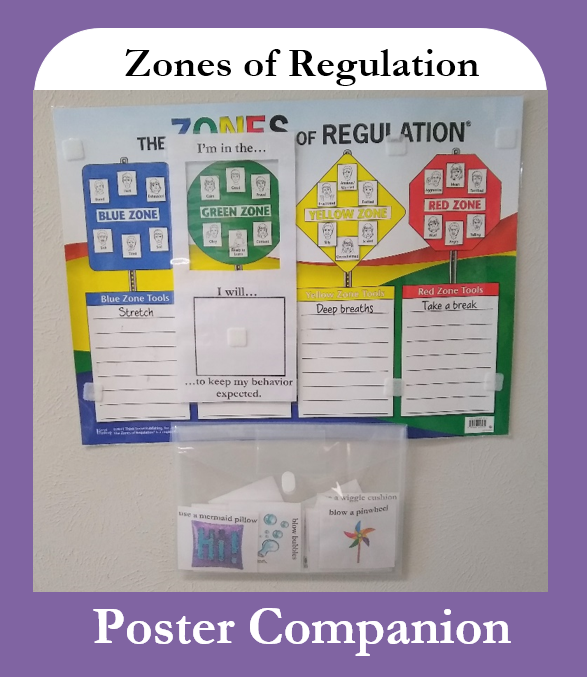
I bought this great zones poster from the Social Thinking Store and had it laminated at my local Lakeshore Learning center for a couple of dollars. For some kids I have them use dry-erase markers to fill in ideas for tools for each zone, but I recently made this poster companion to go with it and the kids are really liking it. I’ve also added one of these plastic envelopes at the bottom to hold all the options I have for regulation tools.
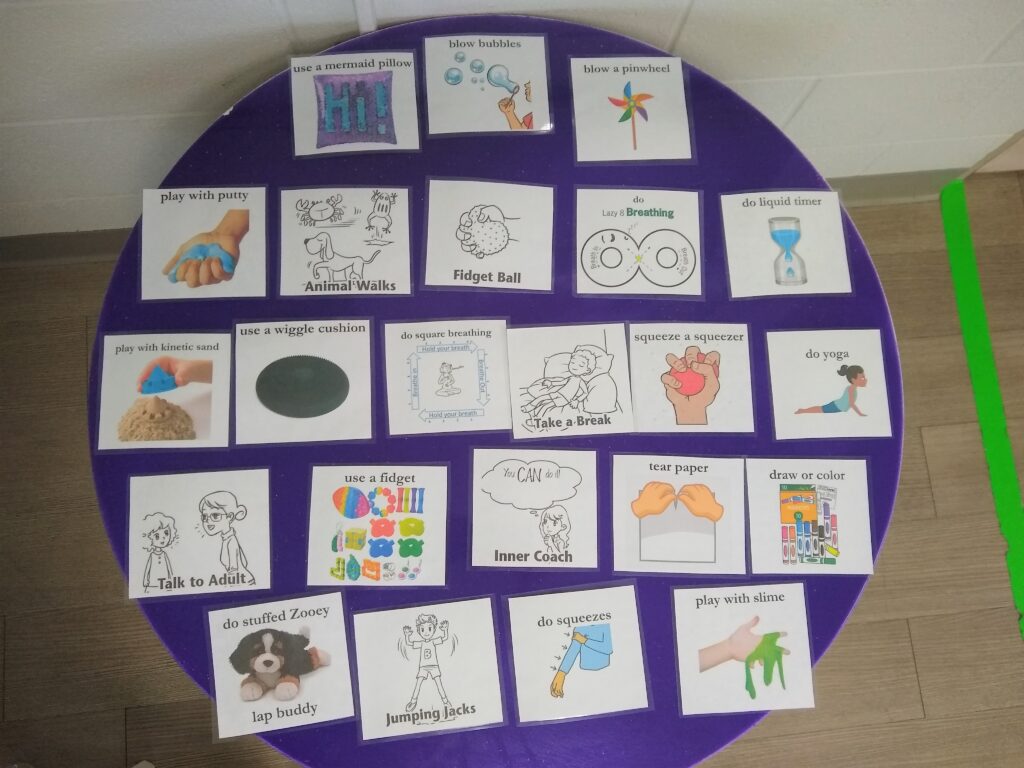
Along those lines…
Zone Tool: Mermaid Pillows
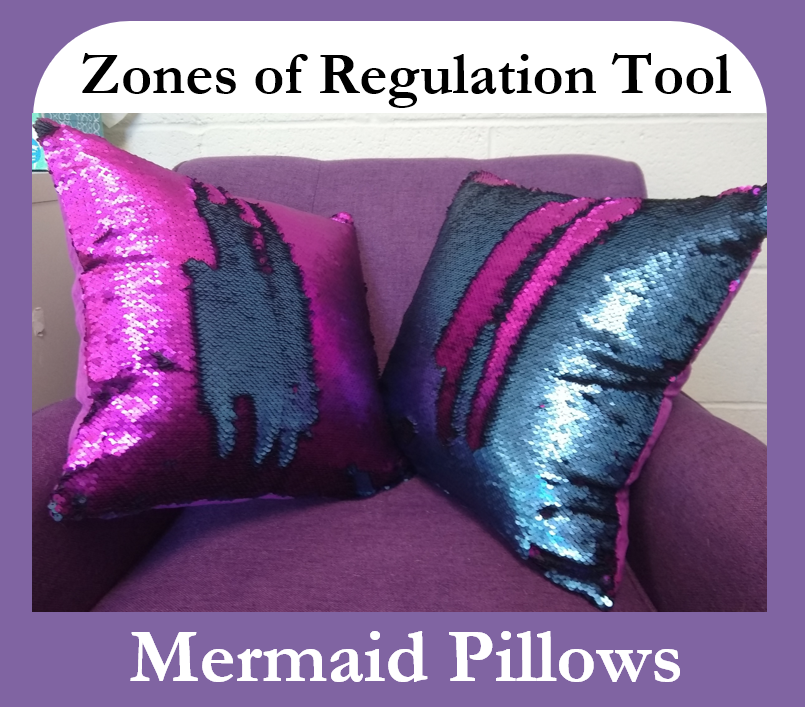
I just love these pillow cases! I also bought these inserts to go with them. Every regulation tool can be used for any zone and they can have different effects on each child, but Mermaid Pillows seem to most often help kids who are in the yellow zone and feeling worried, overwhelmed, scared, or frustrated. To disinfect them I switch the sequins all in one direction, spray it with a few squirts of Cavicide, let them sit for 3 minutes, then switch them all into the other direction, spray them again, and let them sit again. It takes them overnight to dry (even with our dry desert climate) so only 2 patients can use them each day, but I’m limiting myself to only 2 in-person appointments each day right so it works with my caseload. Once the pandemic is over I plan to disinfect them using these steps on a monthly basis.
Toca Boo! for Social Inferencing
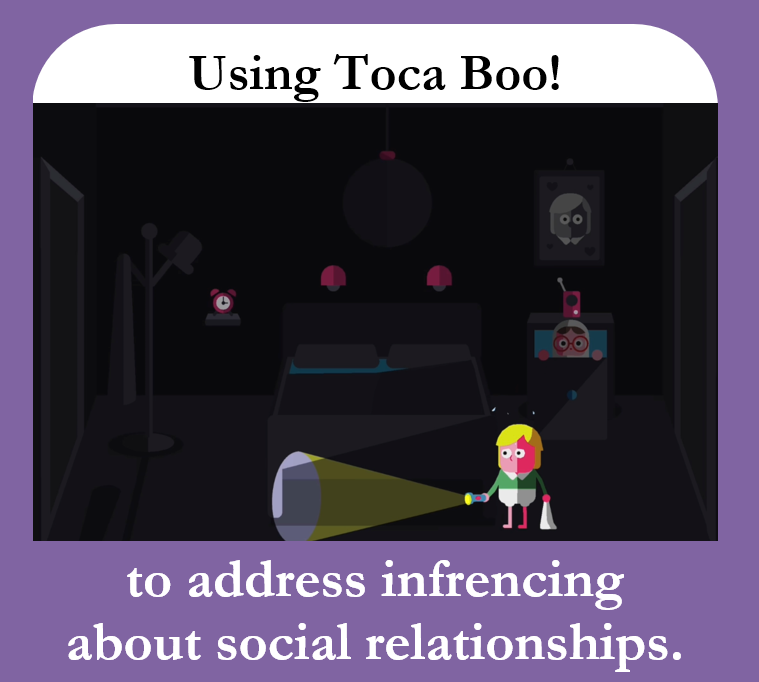
I thought this would be the perfect app since it’s Halloween-themed! Here’s my tutorial on how I’m using this app to target social inferencing (“How do these two people know each other?”).
Using Amelia Bedelia Books for Idioms
I loved Amelia Bedelia when I was growing up in the early 90s! In fact, I often wonder if my love for these books is why I became an SLP. Amelia Bedelia has had a bit of a makeover since then: she’s now a child! Honestly, that makes more sense!
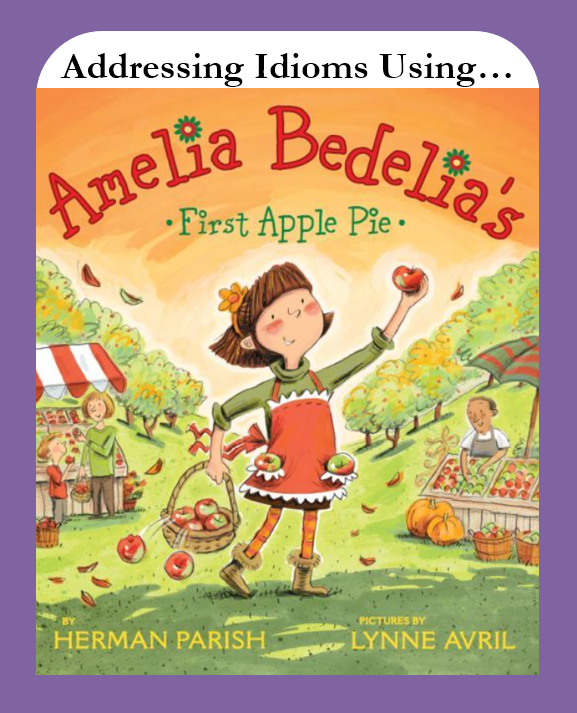
If you’ve never read these books Amelia Bedelia struggles with idioms and homonyms and often makes mistakes because of this struggle. I’ve been using these books with my kids who struggle with idioms. After each mistake Amelia Bedelia makes I ask kids to reflect on what the person really meant. For example, in Amelia Bedelia’s First Apple Pie her grandmother tells her to watch her fingers so Amelia Bedelia stares at her fingers and wonders why she needs to do this to make apple pie. This is when I stop and ask the patient, “Is that what Grandma meant when she said to ‘watch your fingers’?” And then ask, “What did Grandma mean when she said that?” If kids still need more help I’ll give them choices: “Did Grandma mean ‘look at your fingers’ or ‘be careful with your fingers’?” It turns out it’s not just me who loves Amelia Bedelia: my patients love her, too!
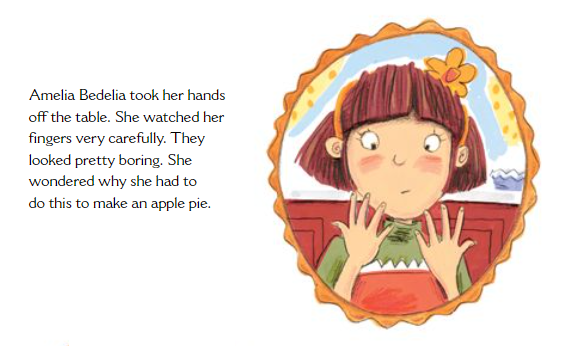
Side-note: I use the Amazon Kindle app to read books on my iPad both during in-person and telehealth appointments. This way I can easily disinfect the iPad between appointments and use the book again the same day (instead of having to wait 28 days between uses so that any viruses on the book’s pages have plenty of time to dry).
COVID-19 Update: Individual Containers for Sensory Supports
Before COVID-19 I kept a sensory tub. I would change the filling every month and my patients would use it to help their regulation as we worked. Now that I’m more concerned about the kids sharing germs I’ve switched to individual containers of sensory supports. I keep each child’s sensory support in their own box (which have a label with their name and is on a shelf that is covered by a fabric shelf-cover during treatment) and throw them away each month.
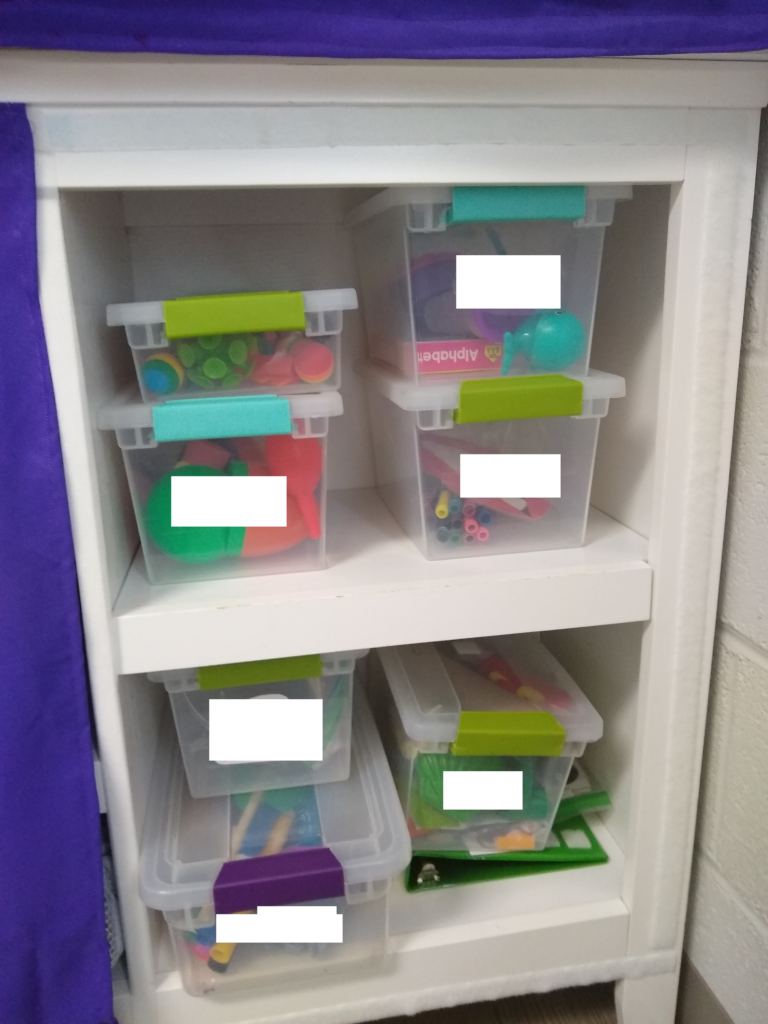
Then the kids get to choose which kind of support to replace them with. Right now they get to choose from…
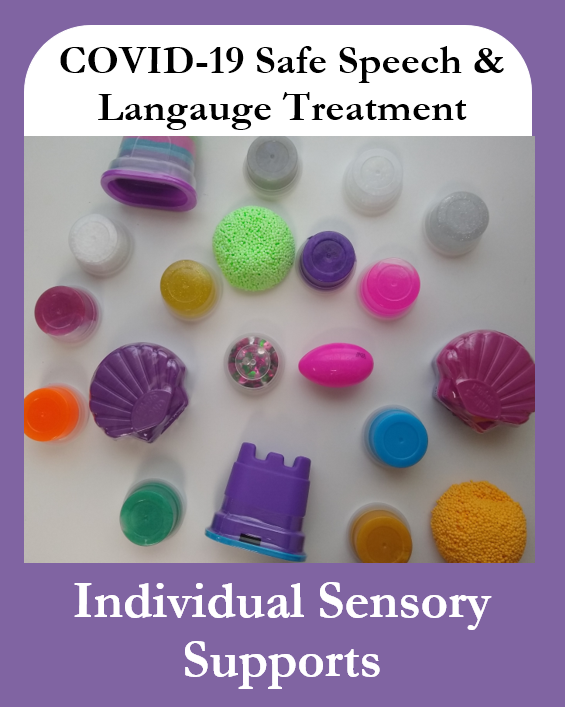
- Nickelodeon’s Slime Pack – the kids have been enjoying using the add-ins to make their slime unique.
- Kinetic Sand Multipack – this one is very popular and I love how easy the sand is to clean up!
- Orbeez Multipack – I just got this one, but I have a feeling it will be very popular since the kids keep asking me to bring back the Orbeez I had in the sensory tub years ago.
- Silly Putty – this one is not very popular so I haven’t needed to replace it yet.
- Playfoam – this one is the least popular so I haven’t had to replace it yet.
Here are some more sensory supports sold in individual containers to consider:
- Kinetic Sand Ice Cream Cone Pack – the “apple pie ice cream cone” from the multipack I’ve been getting is by far the most popular one in there. I’m excited to try the ice cream cone multipack next!
- OrbSlimy Flowtonia Pack – I’m not sure what this is, but it looks like the “whipped” slime that a lot of my patients love.
- Nikelodeon’s Tie Die Slime Pack – The next time I need slime I’ll try this so that the kids get more variety!
- A sensory box subscription like this one from TheraPlay.
